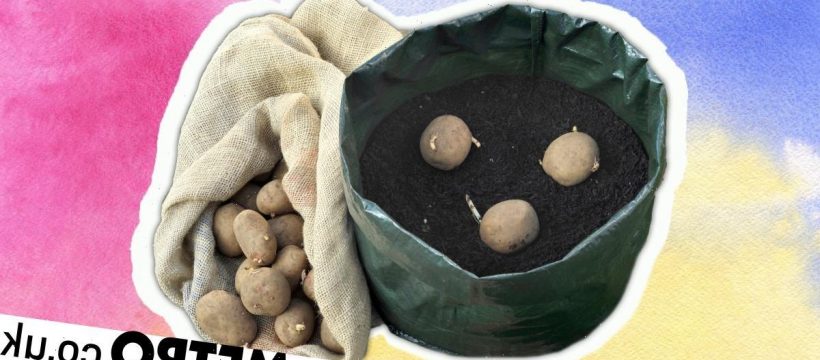Early spring is the perfect time to get your gardening hat back on.
So, as we anticipate the clocks going forward next weekend, it’s a good idea to start thinking about what you want to grow.
One of the most simple yet fruitful options is potatoes, which you can grow easily in bags in your back garden, or even on your balcony.
How to successfully grow potatoes in bags
Growing potatoes in a bag is fairly straightforward.
To start with, you’ll need three to five potatoes per bag (that will be used as the ‘seed potatoes’); an egg carton; a large bag made of plastic (not as great for the environment) or cloth, or a sack made from hessian or jute; and some peat-free compost.
Make sure to opt for a smaller variety of potato so your crop has room to grow.
You can start growing potatoes in late March through to late April.
Step one: Chitting
Firstly, you’ll need to ‘chit’ your potatoes, mindful gardening coach Kendall Platt tells Metro.co.uk.
‘This involves placing them in the egg carton with the end with the most eyes (little dimples in the skin) facing upwards,’ she explains.
‘Leave them on a sunny windowsill and within a couple of weeks you will see little green shoots emerging from these eyes.
‘Once they are 1.5cm to 2.5cm long the potatoes are ready to be planted out.’
According to Platt, each seed potato should produce one plant, which in turn should give you five to 10 potatoes.
If you have many mouths to feed, it might be a good idea to fill multiple bags at once.
Step two: Plant your potatoes
It’s important to make sure your bags have holes in the bottom to let the water escape, then it’s time to start filling them up.
‘Fill your bag with about 10cm of peat-free compost and nestle three to five potatoes gently into it, ensuring you don’t snap off the shoots,’ suggests Platt.
‘Then, add another 10cm of compost on top of them, again being mindful of the delicate shoots.
‘Finally, roll down the edges of your bag to be just above the soil level so the sunlight can get to the plants.’
Step three: Earthing up
Now that your potatoes are planted, it’s time to play the waiting game (around 10 to 20 weeks, to be exact).
‘Keep the bag outside in a sunny spot and keep it well watered,’ says Platt.
‘As the shoots grow, add another 10cm of compost and unroll the bag to be just above the compost line again, approximately every 2 weeks – this process is called earthing up.
Step four: Time to harvest
Finally, you’re ready to harvest your potatoes.
‘You’ll know it’s time to harvest when the foliage turns yellow,’ says Platt.
When that happens, you can simply dump the contents of the bag on the ground and pick out your potatoes.
What can go wrong?
As you can see, the method is simple, but that doesn’t mean it’s foolproof.
There are some things that you need to watch out for when growing potatoes in a bag, such as forgetting to earth up, or maybe even a blight.
Problem: Not giving your potatoes enough room to grow
Solution: ‘When growing in bags, opt for either an early or a salad variety of potatoes, which are smaller,’ says Platt.
‘Larger maincrop potatoes need more room and so should be grown in the ground.’
Problem: Not earthing up
Solution: ‘If the potatoes themselves are exposed to the light, they will develop green patches,’ says Platt.
To avoid this, make sure to keep covering them with soil and following the earthing up process until the bag is full.
Problem: A blight or scab
Solution: ‘Blights and scabs are soil and airborne diseases that will cause potato plants to either die or will affect the skin of the potatoes,’ says Platt.
‘You can limit their occurrence by ensuring you use fresh compost and clean tools whilst planting.
‘Make sure to remove any affected stems as soon as you spot them to limit the spread.’
Do you have a story to share?
Get in touch by emailing [email protected].
Source: Read Full Article


